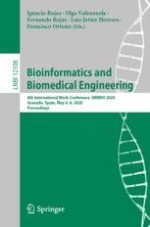2020 | OriginalPaper | Chapter
Blood Plasma Trophic Growth Factors Predict the Outcome in Patients with Acute Ischemic Stroke
Authors : Valeriia Roslavtceva, Evgeniy Bushmelev, Pavel Astanin, Tatyana Zabrodskaya, Alla Salmina, Semen Prokopenko, Vera Laptenkova, Michael Sadovsky
Published in: Bioinformatics and Biomedical Engineering
Publisher: Springer International Publishing
Activate our intelligent search to find suitable subject content or patents.
Select sections of text to find matching patents with Artificial Intelligence. powered by
Select sections of text to find additional relevant content using AI-assisted search. powered by
